#Boshin War
Explore tagged Tumblr posts
Text
After watching numerous Historical Taiga Drama (Period Drama), and put the pieces together, now it makes sense.
After the 14th Ashikaga Shogun was killed, there wasn't any Shogun, throwing the country into civil war (Sengoku Jidai).
Oda Nobunaga decides to install the 15th Ashikaga Shogun, only in name, to use him as a puppet to conquer Japan by his name.
No lords dare oppose him, thinking that Oda has the blessing of the Shogun, so anyone who oppose the Shogun is a traitor.
Many clans were defeated or subjugated, including Tokugawa, which end up becoming a vassal of Oda.
Takeda Shingen sees through Oda's lies and declares war, causing other surviving clans to uprise against Oda.
Oda was cornered until Shingen dies abruptly, turning the tide of the war, which eventually lead to Takeda clan decline.
Shortly after, Uesugi Kenshin, the last one standing that Oda considers to be a formidable foe, also dies mysteriously.
With Shingen and Kenshin dead, Oda finally dared to kick the Shogun out of the capital to seize control of the country himself.
Akechi Mitsuhide, who has been serving the Shogun now pledge himself to Oda, abandoning the Shogun, or so it seems.
Akechi is aware of the surviving clans of Tokugawa, Sanada, Uesugi began to communicate in secrecy.
But Akechi kept to himself as he does not trust Toyotomi Hideyoshi, a loyal servant to Oda Nobunaga.
Oda send Hideyoshi to finish off the Shogun's supporters in the west, where the Shogun had ran to seek refuge.
Oda send Akechi to support Hideyoshi but Akechi decides to betray him and kill Oda, paving way for Tokugawa in the future.
Hideyoshi returns from the west to the capital to eradicate Akechi, his clan and supporters, while Tokugawa laid low.
Years later, after Hideyoshi dies, Tokugawa finally made his power move to unify the country, and Sekigahara takes place.
Tokugawa decides to eradicate the entire Toyotomi clan and siege Osaka, wanting to end the endless civil war once and for all.
The new Shogunate is established with him being the 1st Tokugawa Shogun, after the previous Ashikaga Shogun.
Japan has over 200 years of peace, before the America and the Europeans showed up with their mighty naval fleet and canons.
Japan is divided into two, the Shogunate that kowtow to the westerners, and the Emperor who rejects the westerners.
Boshin War broke out between the Shogunate and the Imperial (Emperor), to decide the fate of the country.
It's a long, long, long history. This is just the gist of it. Who says "tv shows" aren't educational eh?
It may not be 100% accurate as dramas are meant to dramatized real life events for our viewing pleasure.
But it does spark one interest to actually read the history to know in detailed of what really happened.
#taiga drama#historical drama#period drama#japanese drama#japan#japanese history#sengoku jidai#oda nobunaga#toyotomi hideyoshi#tokugawa ieyasu#takeda shingen#kenshin uesugi#akechi mitsuhide#sekigahara#boshin war
24 notes
·
View notes
Text
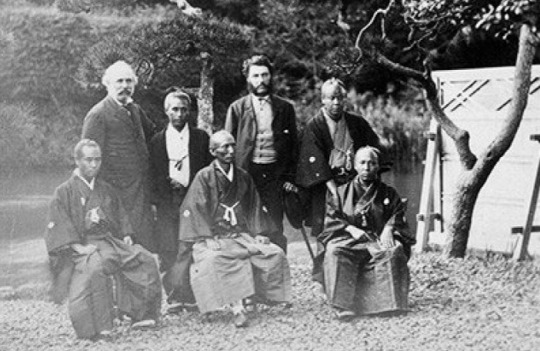

I came across two photos of Katsu Kaishu that I haven't seen before, taken in 1867 by Charles Leander Weed, who is actually mostly known for his landscape photography.
In the first (left) image, Katsu Kaishu is standing in the back row, next to Ambassador Robert Van Valkenburgh, on the far left.
In the second photo, Katsu Kaishu is standing in the back row, third from right. The second image also identifies the other individuals (tentatively), left to right: Ezure Akinori (Foreign Office), Robert Van Valkenburgh, Ishikawa Jukei, Inaba Masami (daimyo of Tateyama Domain), Katsu Kaishu (Minister of the Army), Matsudaira Taro (Commander-in-Chief of the Army), and Ozeki Masuhiro (daimyō of Kurobane Domain).
I'm assuming that the occasion of these photos has something to do with the shogunate's purchase of the ironclad Kotetsu, in 1867. Van Valkenburgh prevented its delivery, and it was later sold to the new government forces during the Boshin War, where it was used against shogunate forces.
On 6 May 1869, Kaiten rammed Kotetsu as planned, and the elite Shinsengumi began boarding Kotetsu. However, the nine-foot difference in deck height greatly impeded the boarding team, giving the Kotetsu’s crew time to overcome the shock of surprise and turn the Gatling gun on the boarding team, which was slaughtered, including the boarding team commander. (Via)
#shared#Edo period#Tokugawa period#Bakumatsu#photography#Japanese photography#katsu kaishu#Boshin War#history reference#historical reference#history research#historical research
15 notes
·
View notes
Text
Others: Any other shower thoughts you get about Genshin?
Me: Inazuma should have access to firearms.
Others: I beg your pardon?
Me: Well, you see, Inazuma is based off Japan, and more specifically Edo era Japan. However, the motifs and plot line of Inazuma is most comparable to a certain extent to the Meiji Restoration.
Both of these are important to consider, as the start of the Edo era (1603) was the ending of the warring states period, where one of the crucial details was the introduction of firearms by the Portuguese.
In game, a whole quest line focuses on the Mikage Furnace, a furnace meant to produce weapons for the Shogunate, with the maintenance done by Fontainian engineers/mechanics. Furthermore, several canons can be found on the islands nearby. This means that Inazuma has the capacity to do so.
Furthermore, theme wise, it makes sense. The plotline follows the Boshin war to a certain extent, between Central clans versus more Southwestern clans (Tenryou Comission vs Sangonomiya Clan/Watatsumi island = Tokugawa Shogunate and loyal clans vs Satsumi and Chosu domains and fellow Imperialist clans), as well as outside interference to a limited extent (Traveler and Fatui = British and French).
While firearms might perhaps be the best way to hint at the concept of eternity leading to stagnation. The war was, ostensibly, a stalemate, so imagine if one side got firearms, either from Fontaine, the Fatui, or domestically made. The other side would then have to make/acquire them as well. Even if Raiden’s eternity was to be maintained, it would be ironic for that eternity to continue through advancing technology.
Finally, I just think it could be sick. Imagine clashes of Tenryou and Resistance forces, and a volley of musket fire comes from the ranks of the Commission side. Or perhaps a lone resistance marksman taking potshots at Kujou clan officers.
Others: … How much thought do you put into this bit?


Left: Historical Japanese picture of Ashigaru gunners aiming their matchlocks
Right: Painting by Giuseppe Rava depicting samurai gunners during the Boshin war
#genshin au#Genshin impact#world building#Genshin world building#genshin inazuma#genshin impact inazuma#Inazuma#history#History x Genshin#edo japan#Boshin war#meiji restoration#firearms#samurai history#samurai#genshin fontaine#fontaine#shower thoughts
5 notes
·
View notes
Text

Samurai of the Satsuma Clan, during the Boshin War period (1868-1869) 1860s
Photo: Felice Beato
49 notes
·
View notes
Text
Flag of the Republic of Ezo

This is the flag of the Republic of Ezo. It comes from a world where the Boshin War went slightly more favorably for the Shogunate forces. As a result, the Meiji government was forced to, at least temporarily, recognize the Republic of Ezo. It wasn't long before the Japanese declared war on Ezo once again. However, the Satsuma Rebellion still happened and was a lot more widespread, emboldened by Ezo's success. The Meiji government was forced to focus on quelling the Satsuma Rebellion. Ezo was able to find support from France and Russia to help protect them from the Japanese. Eventually, Japan had no choice but to formally recognize the Ezo government.
In response to Ezo's alliance with France and Russia, Japan strengthened its ties to Britain and Germany. Following their failure to capture Hokkaido, the Japanese turned their attention to Korea. Ezo, under the command of the recently defected Saigo Takamori, also sent an expedition to conquer Korea. Korea was able to play Japan and Ezo off of each other, and was able to maintain its independence. In time, Korea was able to modernize and industrialize like Japan had. Japan was humbled by its failure in Korea, and the Japanese were forced to focus more on domestic policy than foreign conquest.
Ezo also pursued a policy of isolationism following the failed expedition to Korea. Some industrialization was a necessary evil, but on the whole Ezo strived to maintain as much of its traditional culture and way of life as possible. As time went on, however, Ezo began to increasingly fall under French influence. In many way, it could be said that Ezo had become a French protectorate.
World War I started off around the same time, and with very similar circumstances, as our world. However, in this world Japan fought for the Central Powers. The Japanese were bitter at the British for selling weapons to Ezo, resentful growing opposition to the creeping British influence on Japanese society, and their alliance with Germany was as strong as ever. Ezo initially tried to remain neutral, but a surprise Japanese attack prompted Ezo to join the Entente Powers. The war ended in an Entente victory. Japan was placed under crushing reparations to Ezo, and was forced to cease land in northern Japan to Ezo.
Japan began to grow resentful against Ezo, and began to rearm for another war. Ezo and Korea were subjected to a series of harsh bombing campaigns. It wasn't long before Ezo and Korea were forced to surrender and formerly occupied by Japan. The Japanese continued to expand their influence across East Asia and the Pacific. It wasn't long, however, before they found themselves in conflict with the United States. Like in our world, the war ended in an American victory.
Ezo regained its independence following the war. Though there is still bad blood between Ezo and Japan, the two nations are slowly putting their past behind them. There is a movement to reunify Ezo and Japan into a single nation, but it doesn't have much support at the moment. Still, you never know what the future might hold.
The flag is black and white in reference to the flag of the Tokugawa Shogunate, and the seven-pointed star stands for the spirit of the Ezo people.
Link to the original flag on my blog: https://drakoniandgriffalco.blogspot.com/2017/10/flag-of-republic-of-ezo.html?m=1
#alternate history#alternate history flag#alternate history flags#alt history#vexillology#flags#flag#Japan#Ezo#Hokkaido#Republic of Ezo#Flag of the Republic of Ezo#Satsuma Rebellion#Boshin War#Samurai#Shogunate#meiji restoration#Saigo Takamori
18 notes
·
View notes
Text
The Shinsengumi and the Battle of Shirakawaguchi
The Battle of Shirakawaguchi (a.k.a. Battle of Shirakawa Castle, not to be mistaken with the Battle of Shirakawa) took place from leap April 20 to July 14, 1868 (Lunar calendar) or June 10 to August 31, 1868 (Western calendar). It was fought between the Northern Alliance and the New Government Army
At this point, Kondo Isami had already been executed (he died on May 17, 1868, Western calendar) and Hijikata Toshizo was absent due to the injury he got from the Battle of Utsunomiya on May 14 (western), so Saito Hajime (using the name Yamaguchi Jiro) was the Commander the Shinsengumi during the Battle of Shirakawaguchi.
The Shinsengumi and the Aizu forces captured Shirakawa Castle from the New Government Army on Apr 20 (lunar). On May 1 (lunar), the New Government Forces then recaptured Shirakawa Castle with only 700 men against the 2500 men from the Northern Alliance (along with the Shinsengumi) who were guarding the castle. The Northern Alliance (along with the Shinsengumi) increased their troops to 4500 and tried 7 times (from May 26 to July 14) to retake the castle, but failed.
Maps of the New Government Army’s progress

(image source)

(image source)
Details
(source: Wikipedia)
See: Map of places mentioned in this post
On leap April 20, Keio 4 (lunar), the Shinsengumi and the Aizu soldiers led by Sanai, the son of Tanaka Harukiyo (Matsudaira Katamori’s chief retainer), invaded and occupied Shirakawa Castle, which was being defended by the soldiers of the Nihonmatsu Domain. After taking the castle, Toyama Iemon, the commander of the Aizu guerrilla corps, and the Shinsengumi (commanded by Saito Hajime) stationed themselves at the Shirasaka barrier to the south of the castle.
After winning the Battle of Utsunomiya Castle on April 23 (lunar), the New Government Army had secured Utsunomiya as a their base. They consisted mainly of soldiers from the Satsuma Domain, as well as soldiers from the Ogaki Domain, the Choshu Domain, and the Oshi Domain. They had marched from Utsunomiya to Otawara, but after learning about the occupation of Shirakawa Castle by Aizu, they advanced to Shirakawa on orders from Edo .
At dawn on leap April 25th (lunar), several hundred advance troops of the New Government Forces made a surprise attack on Shirasaka barrier. The Aizu guerilla forces and the Shinsengumi engaged them in a fierce battle. Hinata Shigetaro (leader of the Suzaku corps), who learned of this battle, attacked the New Government Army from the flank with Higuchi artillery and fought them to a standstill. Other forces then attacked the New Government Army from many directions. The New Government forces had no choice but to flee in the face of these fierce attacks from all sides. While retreating, they was stuck in the muddy fields caused by heavy rain. Due to a combination of fatigue, the lack of ammunition from the deadly fighting at the Battle of Utsunomiya Castle, the exhaustion of the march from Utsunomiya and the lack of familiarity with the area, they withdrew to Ashino (a town about 12km south-west from Shirasaka barrier, a 2.5hr walk).
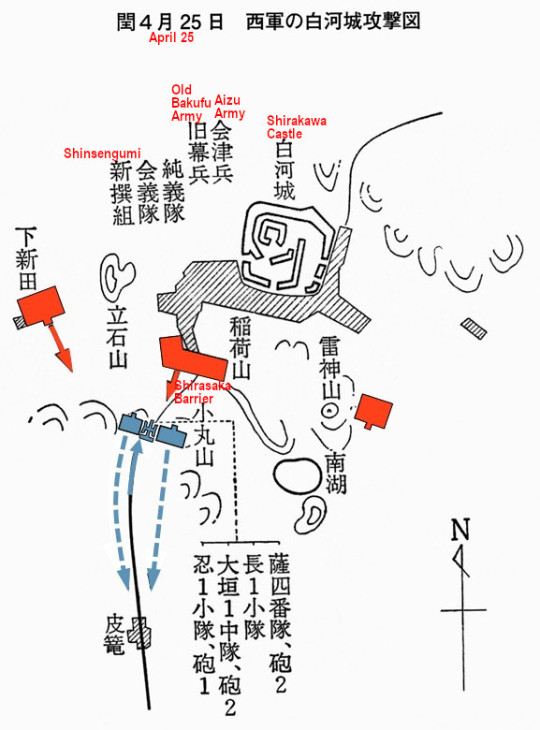
(image source)
On the following day, the 26th, Saigo Tanomo, a retainer of the Aizu Domain, entered Shirakawa Castle as governor of Shirakawa-guchi. Reinforcements from the Sendai, Tanagura, and Nihonmatsu clans also arrived. Saito Hajime and Miyagawa Rokuro of the Jungitai offered to defend Shirasaka barrier, but Saigo Tanomo rejected the idea, saying “We are superior in terms of military strength, so it is unnecessary”. Yamaguchi and the Junyitai were deployed at Shirakawaguchi to protect the main camp. Furthermore, Saigo focused his troops on Mt. Inari, located south of Shirakawa Castle, and deployed his main force and artillery.
[Continue reading]
Timeline of Saito Hajime’s participation in the Battle of Shirakawaguchi
(Dates are based on the Lunar calendar)
Since Saito was the Commander of the Shinsengumi, we can assume that he was involved in everything that the Shinsengumi was involved in.
19-Apr Hijikata captures Utsunomiya Castle
23-Apr The New Government Army recaptures Utsunomiya Castle, Hijikata gets shot in the foot
25-Apr Kondo Isami was executed at Itabashi, Musashi (near Edo)
28-Apr The Shinsengumi encamped in Akatsu inn going by way of Shirakawa from Nagareyama
29-Apr The Shinsengumi and Hijikata arrives and joins Aizu At this time there is no proof that Saitou was participating in both repeat month
5-Apr (leap) Matsudaira Katamori has an audience with the Shinsengumi, Saitou as one of the Captain’s of the Shinsengumi is ordered to go to the front, to Shirakawa district
6-Apr (leap) Saitou leads the Shinsengumi and departs from Aizu Wakamatsu to the front and encamps at Akatsu inn
21-Apr (leap) The Shinsengumi goes to the front aiming for Shirakawa Castle from Sendai
22-Apr (leap) Shinsengumi encamps at Shirakawa Komine Jouka inn
23-Apr (leap) The Shinsengumi defends the Shirasaka Kanmon (Shirasaka barrier)
25-Apr (leap) The New government army attacks the Shirasaka barrier
26-Apr (leap) The Shinsengumi defends the Shirasaka barrier from the Shirakawa attack of the New Government Army
29-Apr (leap) Shinsengumi defended the Shirasaka barrier and took the place of Sendai soldier. They took a rest at a two storied building at Shirakawa Jouka Nikaidate, encampment was done at Wakimoto Yanagi-ya (Yanagi inn)
1-May The Shirakawa Komine castle was captured by the attack of the New Government Army. The Shinsengumi group that was commanded by Saitou was defeated at the Kurokawa battle and they stayed at Seishidou lodging
2-May They leave the Seishidou inn, encampment in Sendai
26-May The Shinsengumi could not recover Shirakawa Komine castle and they withdraw to Kamigoya (Kamikoya) village for encampment and the New Government Army captures Shirakawa
27-May While they head to Ooyachi village from Shirakawa Komine they met the New Government Army and engage in war but since there were no support soldiers, they retreat to Makinouchi Recently in Sendai, Saitou’s name appears as a commander of the Shinsengumi Taishi in “Aizu Sendai Hisashi Jinja Meibo” (comment: Unsure of exact name but translates to “Aizu Sendai member list of names”)
30-May Okita Souji dies from tuberculosis in Sentagaya, Edo
3-Jun When the Aizu feudal lord Matsudaira makes an official business trip to Yoshinori, Saitou and company returns from Sendai to have an audience with him Saitou and company receives 25 ryo as war funds
6-Jun Saitou who leads the Shinsengumi goes to the front departing to Oohira-kuchi
12-Jun Saitou’s group is once again defeated as it tries to recapture Shirakawa Komine from Hata village
16-Jun He returned from Hata village to Fukura, staying at Senjuin lodging
25-Jun The battle to re-capture Shirakawa Komine castle is done but it is unsuccesful
1-Jul Although the Shinsengumi goes to war from Hata village and invades the Tenjin mountain to capture Shirakawa Komine castle, they are beaten by the New Government Army and withdraws from Hatori to Fukura to re-organize the preparations
7-Jul It went to war from Fukura to Moriya-machi (Moriya town)
8-Jul It went from Moriya-machi to Naganuma encamping there to rest
25-Jul The fight to recapture Shirakawa Komine castle is done and it loses for the 7th time, they leave. The sending of troops to Shirakawa ended substantially
(source: shinsengumi.net)
16 notes
·
View notes
Text

Nakano Takeko (中野 竹子, April 1847 – 16 October 1868) was a Japanese female warrior of the Aizu Domait, who fought and died during the Boshin War. During the battle of Aizu she fought with a nagitana (a Japanese polearm) and was the leader of an ad hoc corps of female combatants who fought in the battle independently. After taking a bullet in the chest she had her sister behead her, so that the enemy would not take her as a war trophy!

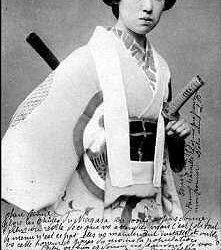
15 notes
·
View notes
Text
I did a whole-ass PhD about the Boshin War and the thought of the Shogun's envoys, including a ninja, visiting the Buchanan White House still blows my mind. (I even did a podcast episode a couple weeks ago about it!)
Whenever I see someone refer to "Victorian era-" for places outside the UK I'm tempted to start saying shit like "Han Dynasty era Rome", "Soviet era Australia" etc
153K notes
·
View notes
Text
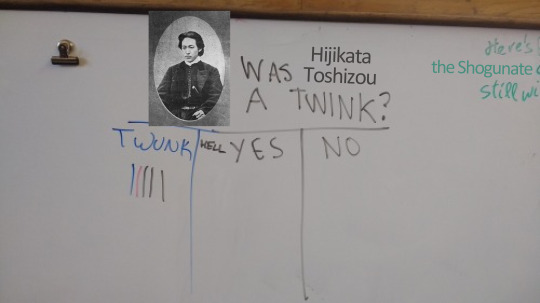
bakufu posting inspired by @bisexualleorio
#hijikata toshizo#gkm#golden kamuy#kind of. not really. but how else can i reach the boshin heads on this webbed site 😔#hashtag boshin war hashtag tokugawa shogunate hashtag anti choshu slash anti satsuma sentiments
18 notes
·
View notes
Text

Lord Toranaga in Shogun (2024)
Historically, following the establishment of the Shogunate, Japan was unified with 300 years of peace during *Edo Period. The same period they were isolated from the world, until the arrival of another "gaijin", Matthew Perry, and his fleet of black warships to force the opening of Japan to trading as America is expanding in the Pacific.
*The movie 47 Ronin takes place during Edo Period.

Matthew Perry in Samurai Marathon (2019)
At the time, the weakened Spanish and Portuguese are withdrawing from Asia as the new powers, Britain and America took control of Asia and the Pacific, triggering Opium Wars. This divides Japan into pro-Shogunate and pro-Imperial factions, causing Boshin War, as each side have different ideas of how to strengthen the country.
*The movie The Last Samurai takes place during this time.
You can see here for the historical timeline of Japan. A Japanese Drama hilariously sums up the Meijin Restoration here.
#shogun#shogun fx#shogun 2024#hiroyuki sanada#yoshii toranaga#tokugawa ieyasu#tokugawa shogunate#edo period#matthew perry#samurai marathon#boshin war#japan#japanese history#47 ronin#the last samurai#period drama#jidaigeki
47 notes
·
View notes
Text

"You know... I am part of the police force...~"
#dash commentaries#//i will write a hc about this someday#i just haven't had much brain power to do so OTL#but tl;dr he became a police officer after the whole boshin war gsvjkgkdfnjkdf#and of course way later on asked for his gf's hand in marriage
0 notes
Text


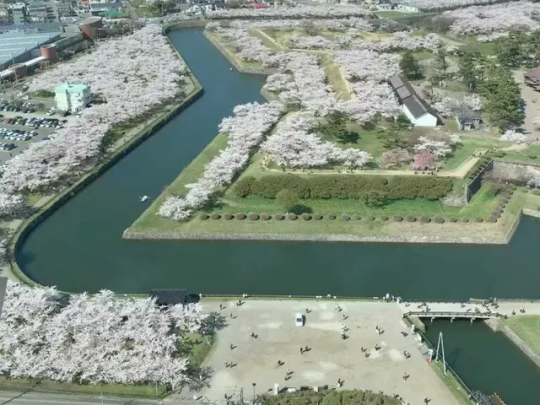

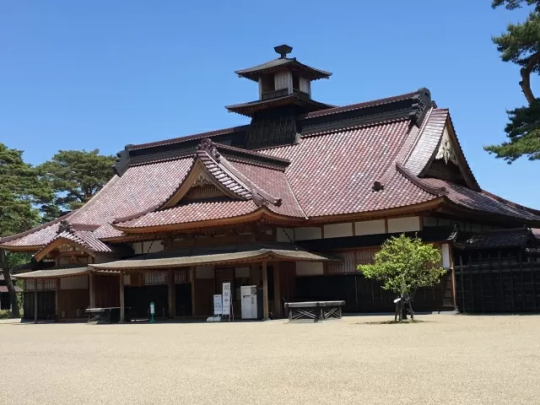




Sean bienvenidos a una nueva entrega de cultura e historia japonesa; en este caso vamos a hablar sobre Goryokaku, localizado en Hakodate en la prefectura de Hokkaido al norte de la isla de Honshu. - Para proseguir con la aventura, en el capítulo anterior comentamos el origen del nombre de Hokkaido, conocido como Ezo, mencionamos que estuvo 260 años encerrado bajo el shogunato Tokugawa e hicimos mención al tratado de amistad de 1854. - Hay algunos historiadores que consideran la fecha anteriormente mencionada como fin del periodo Edo, pero eso es un gran error y yo discrepo mucho en ello, ya que oficialmente termina en 1868, pero para mí y para algunos pocos sería en 1869 con la república de Ezo liderada por Toshizo Hijikata, quien realizó las obras del castillo Goryokaku de traza italiana. - El Goryokaku se construyó en 1864, para el calendario, japonés (Genji 1) y en 2024 se cumplen 160 años de su construcción. Dicho lugar fue tomado para la película y anime Golden Kamuy. - El Shogunato construyó Goryokaku con el propósito de garantizar el norte y la posterior apertura del puerto, ya a partir de 1857,el cual tardó siete años en completarse. La Oficina del Magistrado de Hakodate fue construida en el centro y está protegida por un foso. Después de ser utilizada como oficina gubernamental durante unos cuatro años, se convirtió en una base para el antiguo ejército del shogunato durante la Guerra de Hakodate, la batalla más decisiva de la Guerra Boshin,fue desmantelado en 1871 (Meiji 4) después de que terminara la guerra. Un tercio del edificio ha sido restaurado en el mismo lugar utilizando el mismo diseño, método de construcción y tamaño,Goryokaku, donde se demolió la oficina del magistrado de Hakodate, el castillo, se abrió al público como Parque Goryokaku en 1914 (Taisho 3). - Espero que os guste y nos vemos en próximas publicaciones y que pasen una feliz Navidad.
Welcome to a new installment of Japanese culture and history; in this case we are going to talk about Goryokaku, located in Hakodate in the Hokkaido prefecture in the north of the island of Honshu.
-
To continue with the adventure, in the previous chapter we discussed the origin of the name of Hokkaido, known as Ezo, we mentioned that it was enclosed for 260 years under the Tokugawa shogunate and we mentioned the friendship treaty of 1854.
-
There are some historians who consider the aforementioned date as the end of the Edo period, but that is a big mistake and I strongly disagree with it, since it officially ends in 1868, but for me and for a few others it would be in 1869 with the Ezo republic led by Toshizo Hijikata, who carried out the works on the Italian-style Goryokaku castle.
-
Goryokaku was built in 1864, according to the Japanese calendar (Genji 1), and 2024 marks the 160th anniversary of its construction. The site was used for the film and anime Golden Kamuy.
Goryokaku was built by the Shogunate for the purpose of securing the north and the subsequent opening of the port, as early as 1857, which took seven years to complete. The Hakodate Magistrate's Office was built in the center and is protected by a moat. After being used as a government office for about four years, it became a base for the former shogunate army during the Hakodate War, the most decisive battle of the Boshin War, and was dismantled in 1871 (Meiji 4) after the war ended. One third of the building has been restored on the same site using the same design, construction method and size.Goryokaku, where the Hakodate magistrate's office was demolished, the castle was opened to the public as Goryokaku Park in 1914 (Taisho 3).
-
I hope you like it and see you in future posts and have a happy Christmas.
-
日本の文化と歴史の新しい記事へようこそ。今回は、本州の北、北海道の函館にある五稜郭について話します。 - 冒険を続けるために、前の章では、蝦夷として知られる北海道の名前の由来について説明し、北海道が 260 年間徳川幕府の下に封鎖されていること、そして 1854 年の友好条約について触れました。 - 前述の日付を江戸時代の終わりと考える歴史家もいますが、それは大きな間違いであり、私はそれに強く反対します。なぜなら、江戸時代の終わりは公式には 1868 年であるからです。しかし、私や少数の人にとっては、それは 1869 年になるでしょう。イタリア式五稜郭の工事を行った土方歳三率いる蝦夷共和国。 - 五稜郭は元治元年(1864)年に建造され、2024年には築160年を迎えます。ここは映画・アニメ『ゴールデンカムイ』の舞台となった場所です。 - 五稜郭は北方の確保とその後の開港を目的として、1857年から幕府が7年の歳月をかけて建設されました。中心部には箱館奉行所が建てられ、堀で守られています。戊辰戦争最大の決戦となった箱館戦争では旧幕府軍の拠点となり、約4年間官庁として使用された後、終戦後の1871年(明治4年)に解体された。 。箱館奉行所城が取り壊された五稜郭は、同じ敷地内に同じ設計・工法・規模で建物の3分の1が復元され、1914年(大正3年)に五稜郭公園として公開されました。 - 気に入っていただければ、今後の投稿でお会いして、メ���ークリスマスをお過ごしください。
#photo#japan photos#photos#phothography#japanese#japanesehistory#japaneseculture#artjapan#arthistory#日本#ユネスコ#歴史#unesco#考古学#history#japan#archaeology#geography#art#地理#北海道#Hokkaido
95 notes
·
View notes
Text

鶴見 and his mother we know nothing about his childhood, but it doesnt forbid us from speculating. Judging from things which we do know, its a high chance Tsurumi simply grew up alone together with his mother, his siblings and father dead or disappeared after the Boshin War.
#golden kamuy#gk tsurumi#lieutenant tsurumi#tsurumi tokushirou#ゴールデンカムイ#鶴見#lt tsurumi#tsurumi#golden kamuy tsurumi#tokushirou tsurumi#gk fanart#gk
56 notes
·
View notes
Text
Another Thing Blue Eye Samurai Got Wrong
There were women who fought as fighters and samurai (or more often called as onna-bugeisha or onna-musha) for their clan. They didn't have to hide their femininity. There is a long history of female warriors in Japan that date back to an Empress named Jingū (she ruled from 201 to 269 AD). I bring you two of the greats:
Tomoe Gozen

She was skilled at archery, the sword and the use of the naginata. Tomoe is one of the most feared women because of her cleverness and offensive tactical skills. Her men trusted and respected her. During the Battle of Awazu, she killed the Musashi clan leader. Sadly, there is no more records of her after that. Tomoe is the most known and celebrated of the onna-bugeisha.
Nakano Takeko

Like many samurai of her time, she wore the typical samurai armor but instead chose to wear a red hakama. This red hakama became a symbol of not just her femininity but empowerment. She fought in the Boshin War against Imperialists who wanted the Emperor to rise to power (they eventually won during the Battle of Toba–Fushimi).
Similar to the Kiheitai (or the ad hoc army by the Imperialists), she led the Jōshitai or women's army fighting on the side of the Tokugawa Shogunate.
Nakano was wounded with a rifle shot and rather than allowing her enemies to parade her lifeless body as a trophy, she ordered her sister (also a capable warrior as with her mother. all 3 women fought alongside each other) to cut her head off and burry her head in secret so her enemies would not have a reason to disgrace her. Her head was buried under a pine tree and her beloved naginata was given to a temple.
In Aizu during the Autumn festival, girls parade around the streets wearing a red hakama and a white headband to honor Nakano and the women fighters of the Jōshitai.
Other female fighters include Yamamoto Yae aka "Bakumatsu Joan of Arc" and Hangaku Gozen or Lady Hangaku.
______________________________________________________________
There is a reason the filmakers of Lady Snowblood (a film Blue Eye Samurai heavily borrows from) didn't chose to disguise Yuki as a man when she enacted her revenge.
#women samurai#sometimes reality is better than fiction#blue eye samurai#tomoe gozen#nakano takeko#break the stereotype#red hakama#why can't netflix make a series about these women
54 notes
·
View notes
Photo

Tokugawa Shogunate troops during Boshin War, 1868
87 notes
·
View notes
Text
福島県
Japanese Prefectures: Tohoku - Fukushima
都道府県 (とどうふけん) - Prefectures of Japan
Learning the kanji and a little bit about each of Japan’s 47 prefectures!
Kanji・漢字
福 フク blessing, fortune
島 しま、トウ island
県 ケン prefecture
東北 とうほく north-east, Tohoku (northernmost six prefectures of Honshu)
Prefectural Capital (県庁所在地) : Fukushima (福島市)
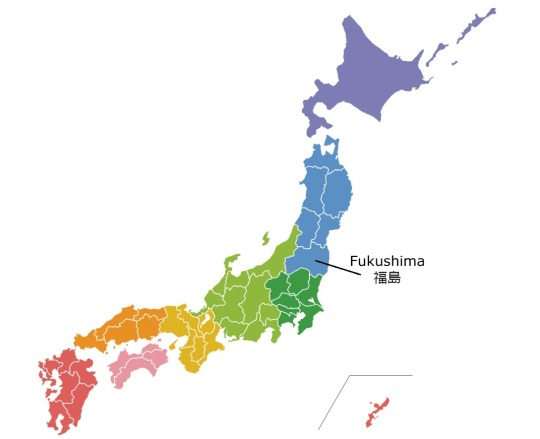
Fukushima is the third largest prefecture of the 47 prefectures of Japan and stretches between the mountainous interior of Northern Honshu to the Pacific Ocean. Like most of the other Tohoku prefectures, Fukushima boasts expansive natural beauty, relaxing hot springs, a rich history, and excellent ski resorts. The feudal Aizu Clan, of the still-standing castle town of Aizu-Wakamatsu, remained loyal to the shogun, even after the shogun was removed from power during the Meiji Restoration. This loyalty led to the Aizu area becoming a battleground of the Boshin War in 1868, where those loyal to the shogun were pushed northwards into Tohoku and Hokkaido as they resisted the reformers and those loyal to the emperor. The Aizu area boasts the post town of Ouchijuku, with buildings retained from the samurai era; Tsuruga Castle; hot springs; and a famous sake brewery.
The March 2011 earthquake and tsunami devastated the coastal areas of Fukushima Prefecture and caused a nuclear accident at the Fukushima Daiichi Nuclear Plant. Tens of thousands of residents were evacuated and a no-entry zone was set up around the nuclear plant. The no-entry zone makes up less than 3% of the prefecture's area, and even inside most of the no-entry zone, radiation levels have declined far below the levels that airplane passengers are exposed to at cruising altitude. Thus Fukushima has been deemed safe for tourists to visit. Wide areas of western Fukushima, in particular, escaped much contamination, including the mountainous interior around the historic city of Aizu-Wakamatsu. And even in most of the eastern parts of the prefecture, radiation levels have by now decreased to pre-2011 levels due to natural decay and decontamination efforts.
Recommended Tourist Spot・おすすめ観光スポット
Ouchijuku - 大内宿
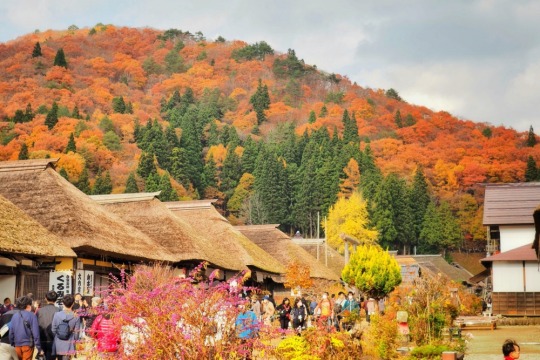
Photo by JR Times
If you want a taste of Edo Period Japan, Ouchijuku is the place for you. This is a former post town along the Aizu-Nishi Kaido trade route, which connected the centers of Aizu (a former castle town to the north in Fukushima) and Nikko (to the south in Tochigi prefecture) during the Edo Period. Restrictions set by the shogunate required travelers to make the journey on foot, and thus post towns such as Ouchijuku developed along the route to provide food, accommodation, and rest. Ouchijuku has been restored to look as it did in the Edo Period, with thatched roof buildings that house a variety of shops, restaurants, and minshuku (small traditional Japanese inns).
The former Honjin, or principal inn for high ranking government officials, is currently a museum, offering an example of elegant traditional housing interiors of the Edo Period and includes a collection of dishes, clothing, and other artifacts.
The Takakura Shrine is a five minute walk off the main path and hosts a unique purification fountain in the midst of a stand of Japanese cedar trees, and was dedicated to Prince Mochihito, who died in June 1180. Near the beginning of the Genpei War (1180-1185) during the Battle of Uji, the prince fled to the Phoenix Hall of the Byōdō-in temple, where he was later captured and killed at the torii gate of K��myōsan. It was said that he managed to escape, and hid in Ouchijuku.
Shohoji Temple is located at the end of the main street and up a steep flight of stairs. At the top of the path visitors can enjoy a panoramic view of Ouchijuku and its surroundings.
Regional Cuisine - 郷土料理
Kitakata Ramen - 喜多方ラーメン
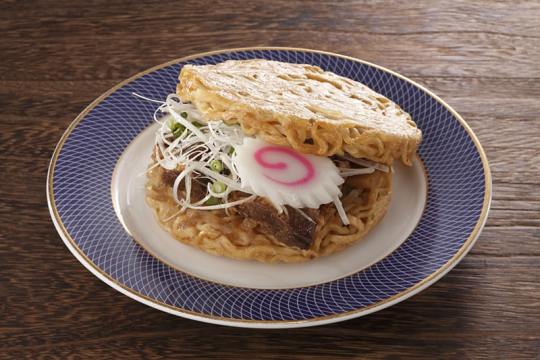
Photo by JR Times
Kitakata ramen is a gourmet specialty from Kitakata, Fukushima prefecture. The origin of these noodles is said to be from Chinese noodles sold in stalls by young people who had come from China from 1920-1930. The noodles are thick and flat with a firm appearance and texture and a relatively high moisture level. The soup is a soy base, with flavors varying depending on the shop, from miso to salt. To determine where to eat, there is a Ramen Map located at the tourist information center in Kitakata.
The popular Kitakata Ramen Burger is made from baked and hardened noodles together with pork, menma, and green onions. Kitakata is also known for its unique culture of eating ramen early in the morning. People who started work very early in the morning at sake breweries and on farms would eat ramen early in the morning, and thus the habit began. "Morning ramen" is available at many shops in the area.
Fukushima Dialect・Fukushima-ben・福島弁
Fukushima-ben or the dialect of Fukushima is similar in some ways to the other Tohoku (or North-East Japan) dialects, but also has some key differences. Here are some interesting phrases I found.
洗濯物をおっこむ (sentakumono o okkomu)
Standard Japanese: 洗濯物を取り込む (sentakumono o torikomu) English: to take in the laundry
ぶっちめた (bucchimeta)
Standard Japanese: ぶつけた (butsuketa) English: to hit (e.g. one's head)
��っぺったこっぺった (suppetta koppetta)
Standard Japanese: ごちゃごちゃ言うな (gocha gocha iu na) English: don't complain about it
うっちしい (ucchishii)
Standard Japanese: うるさい (urusai) English: noisy, annoying
#japanese prefectures#日本語#japanese#japanese language#japanese langblr#langblr#studyblr#都道府県#福島県#fukushima
86 notes
·
View notes